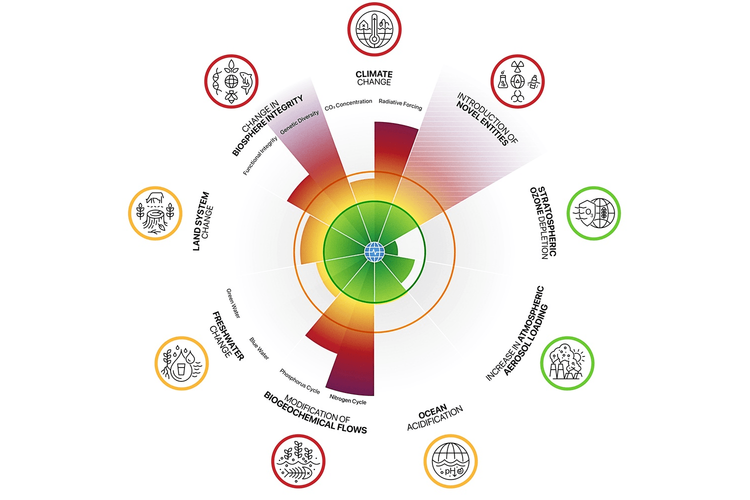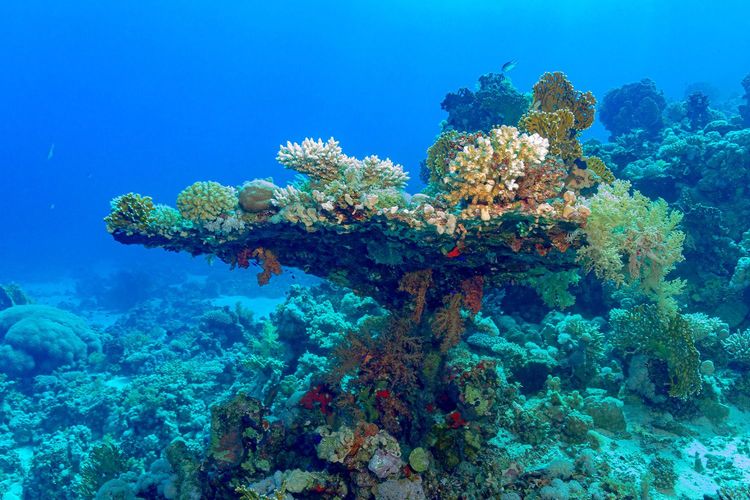
Seven planetary boundaries breached
The Planetary Health Check 2025, published by the Planetary Boundaries Science Lab of the Potsdam Institute for Climate Impact Research (PIK), issues an unprecedented warning: 7 of the 9 planetary boundaries that define the Earth’s “safe operating space” have been breached—one more than in 2024.
The boundaries already crossed are:
- Climate Change
- Biosphere Integrity
- Land-System Change
- Freshwater Use
- Biogeochemical Flows
- Introduction of Novel Entities
- Ocean Acidification (new in 2025)
Only the ozone layer and aerosol pollution remain within the safe zone, thanks to decades of international cooperation.
Oceanographer Sylvia Earle, Planetary Guardian, also reminded us: “The ocean is the life-support system of our planet. Without healthy seas, there is no healthy planet. Acidification is a flashing red warning light: protecting the ocean means protecting ourselves.”
What is ocean acidification?
The ocean absorbs about a quarter of the CO₂ produced by human activities. This role makes it essential for regulating the global climate, but it comes at a cost: CO₂ dissolves in seawater, forming carbonic acid, which causes a decrease in ocean pH.
Since the beginning of the industrial era, the surface ocean pH has dropped by about 0.1 units, equivalent to a 30–40% increase in acidity. This change is pushing marine ecosystems beyond their resilience threshold.
The effects on marine ecosystems
Ocean acidification particularly threatens organisms that build calcium carbonate shells and skeletons, such as pteropods, mollusks, and corals. Tiny pteropods—crucial to the marine food web—are already showing signs of shell erosion, with cascading consequences for fish, seabirds, and ultimately global fisheries.
Tropical and cold-water corals are among the most affected, along with Arctic marine life, where chemical changes occur more rapidly.
Why action is still possible
Although the diagnosis for the Planet is alarming, scientists stress that change is still possible. The successful protection of the ozone layer, thanks to the Montreal Protocol, demonstrates that coordinated global action can reverse negative trends.
The challenge now is to cut fossil fuel emissions, halt deforestation, and protect the oceans: only then will it be possible to bring Earth back into a safe operating zone.


